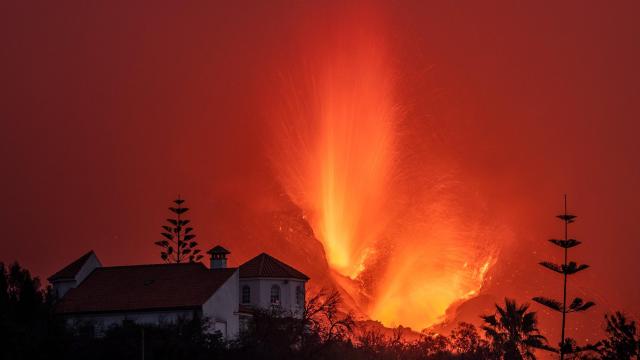Cumbre Vieja’s eruption stepped up a notch over the weekend. The cone of the volcano erupting on one of the Canary Islands has partially collapsed, Spanish authorities said Saturday, sending rocks as big as three-story buildings tumbling down the hillside.
The Cumbre Vieja eruption on the Spanish island of La Palma started nearly three weeks ago. Lava has already engulfed nearly 1,200 buildings on its way to the Atlantic Ocean and forced thousands of people to evacuate. This explosion marks only the third time La Palma has erupted over the past 100 years: The first was in 1949 and then in 1971. And with the collapse of the cone, lava could continue its march of destruction.
Satellite Shows New Lava Flow
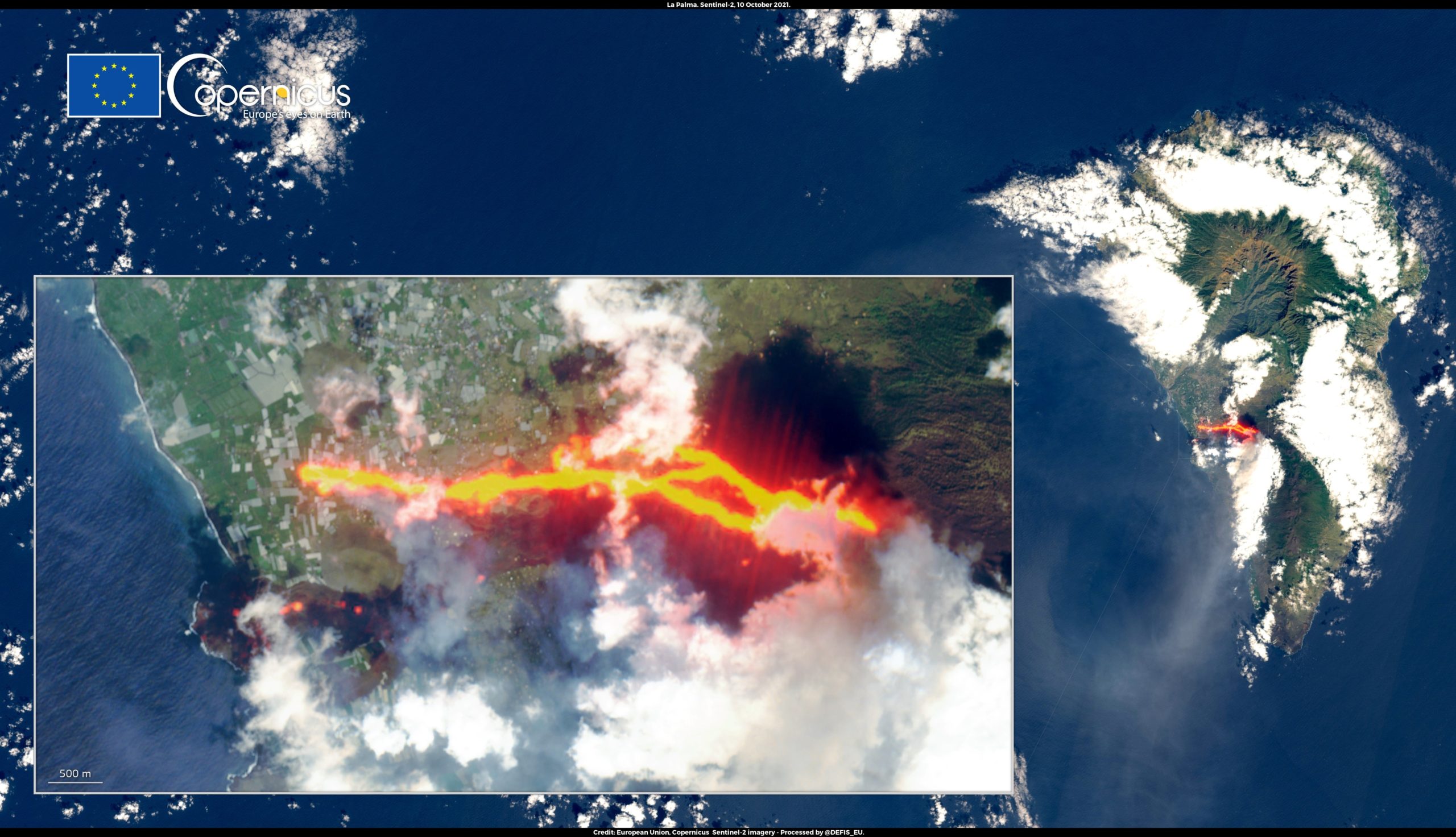
New imagery captured by the European Space Agency shows the multiple trails of lava streaming from the volcano to the sea. Copernicus-2 satellite imagery taken on Sunday shows a new stream of lava caused by the collapse of the cone working its way to the Atlantic, as well as lava that has already reached the ocean from the previous stream.
A volcanic cone is the mound built by past eruptions. Sources at the Canary Islands’ Volcano Risk Prevention Plan told Spanish newspaper El Pais on Sunday that the cone’s collapse has caused a “notable rise” in the amount of lava flowing out of the volcano, as well as a few new lava streams they are monitoring. The collapse also caused the volcano to become more explosive.
Saturday ‘Was a Hard Night’ on La Palma
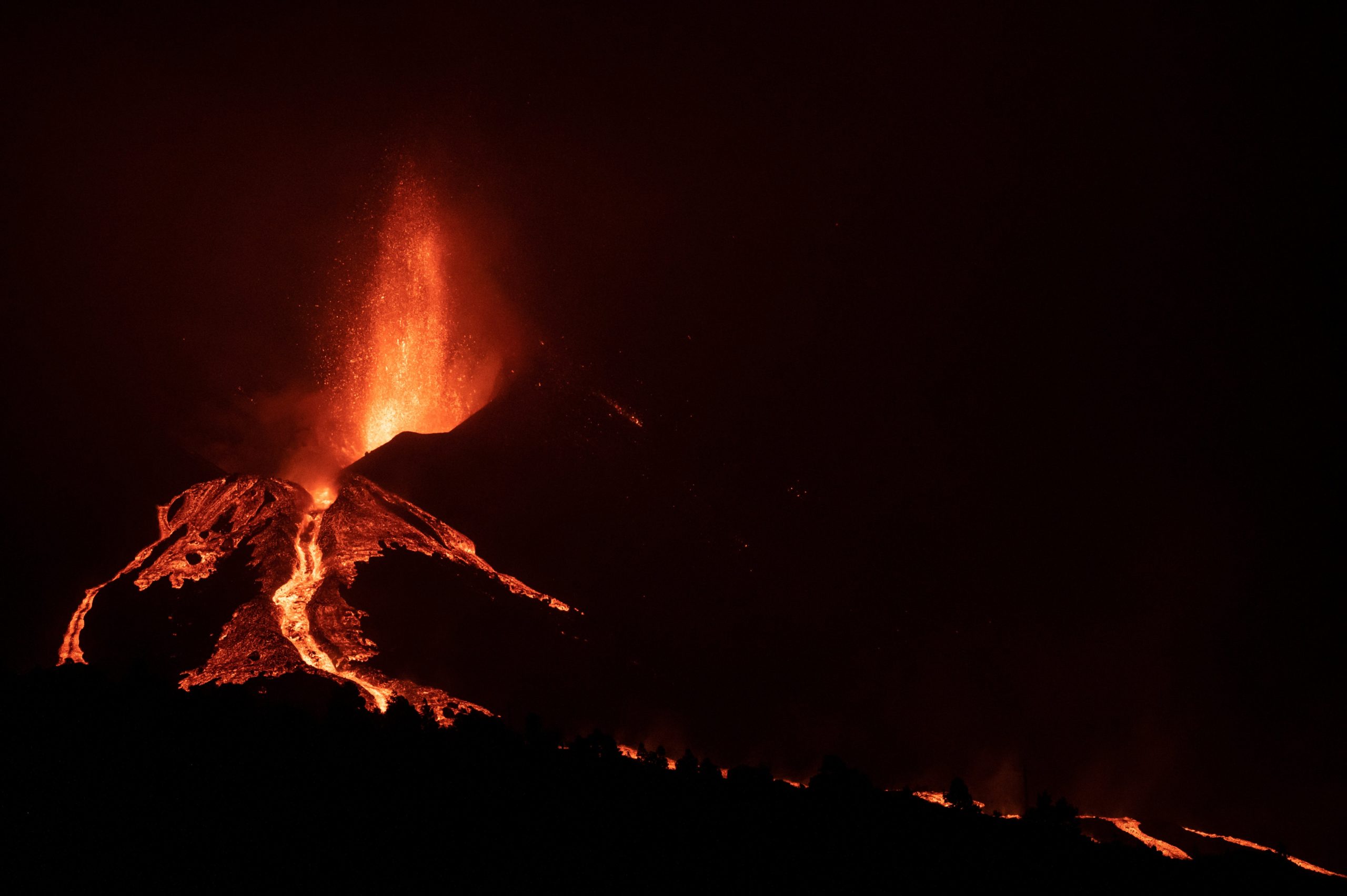
“Last night was a hard night,” Pevolca technical director Miguel Ángel Morcuende told El Pais on Sunday. Authorities said that the cone’s collapse was not entirely unexpected, and they expect more of the cone to collapse as the volcano continues to erupt.
Homes Are in Danger

Since the volcano’s initial eruption, authorities have been keeping tabs on the lava flow and how it might impact La Palma’s 83,000 residents. While 6,000 people have been evacuated thus far and the lava has consumed homes, life has continued as usual for many on the island. The flow has largely affected a portion of the western side of the island, with ashfall also spattering areas immediately downwind.
Some of the new flow, authorities said, is tracking near where evacuations have already occurred, and they’ve allowed people whose homes might be in danger back into the exclusion zone to get their belongings. The AP reported that multiple trucks left the evacuated area on Saturday with loads of furniture and other household items.
Multiple Earthquakes Detected
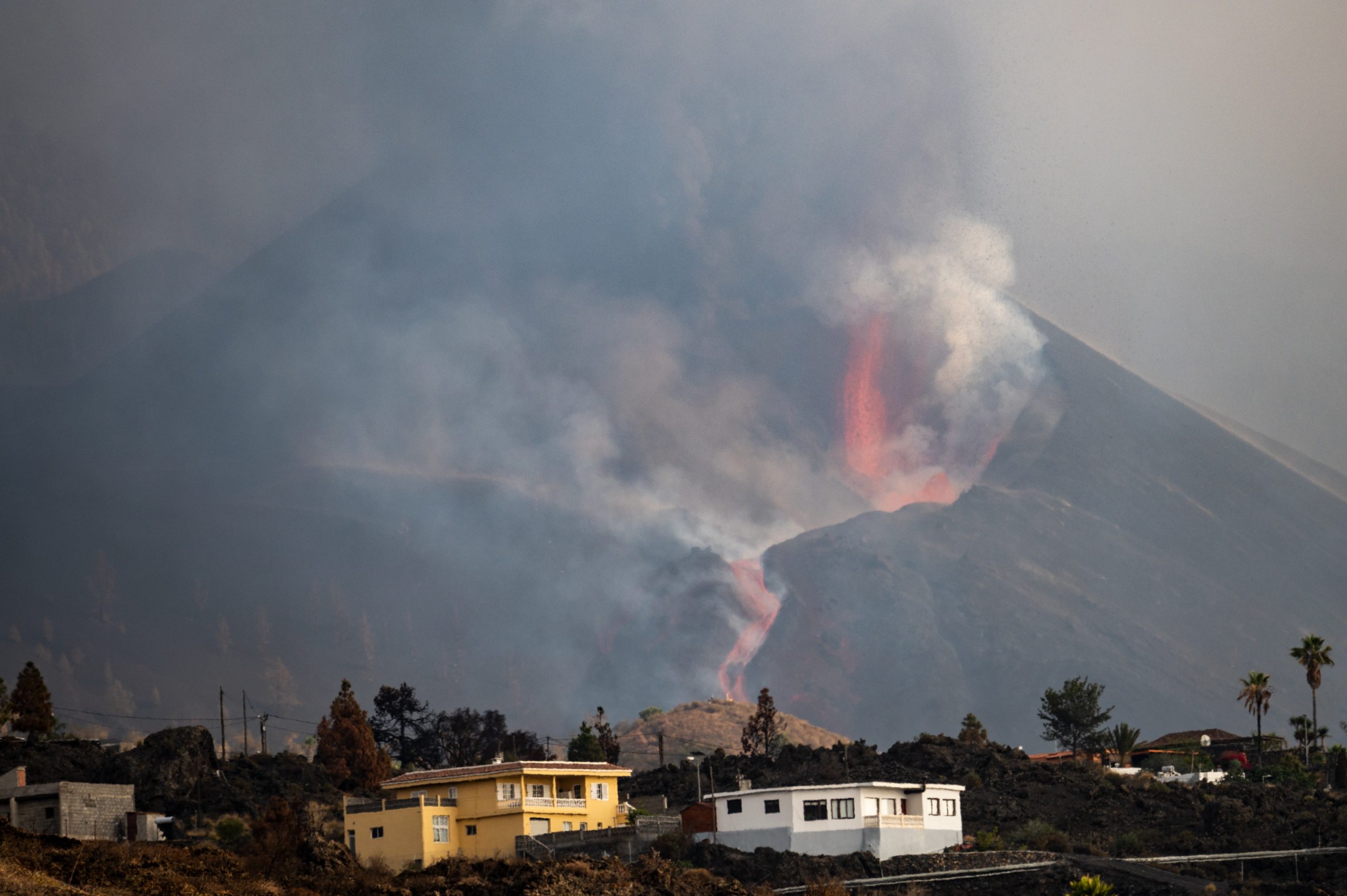
A week before the volcano began erupting in late September, the Canary Islands Volcanology Institute said it recorded more than 20,000 earthquakes in the area. Seismic activity has continued as the volcano keeps erupting. There were 21 seismic incidents on Sunday alone, the the Spanish National Geological Institute said, including one earthquake with a magnitude of 3.8.
Dangerous Gases Rise Where Lava Meets the Ocean
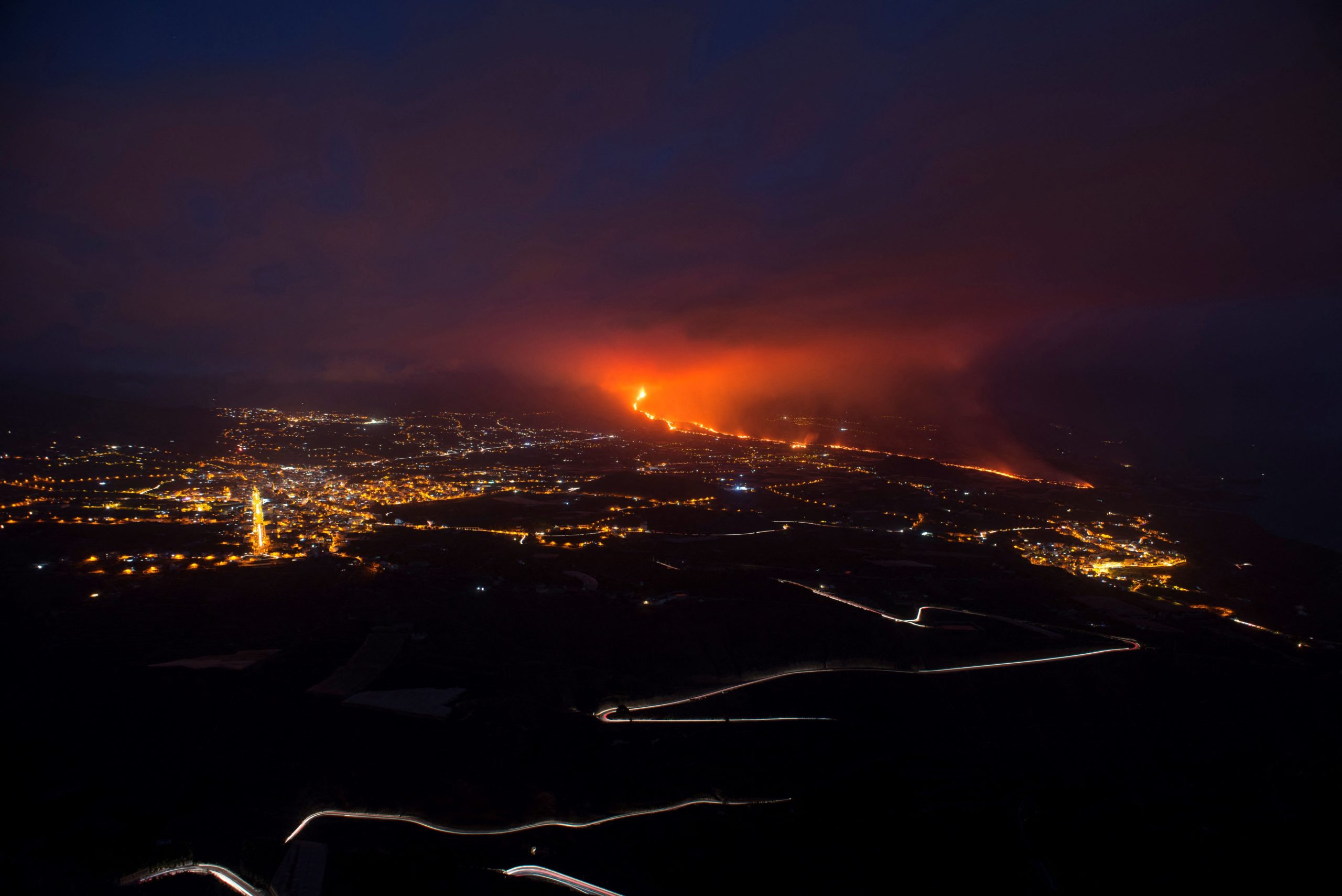
The lava on land isn’t the only danger. Cumbre Vieja’s molten rock river reached the sea late last month, 10 days after the eruption started. Hot lava hitting seawater can cause a reaction that emits a deadly mix of steam, toxic gas (including hydrochloric acid), and tiny shards of volcanic glass. This mix is known as “laze” — a portmanteau of “lava” and “haze” — which can cause breathing difficulties and irritate the skin of people who come in contact with it. Communities near where the lava is reaching the sea have been advised to stay inside and keep their windows shut.
There’s Even a Risk of ‘Lava Bombs’
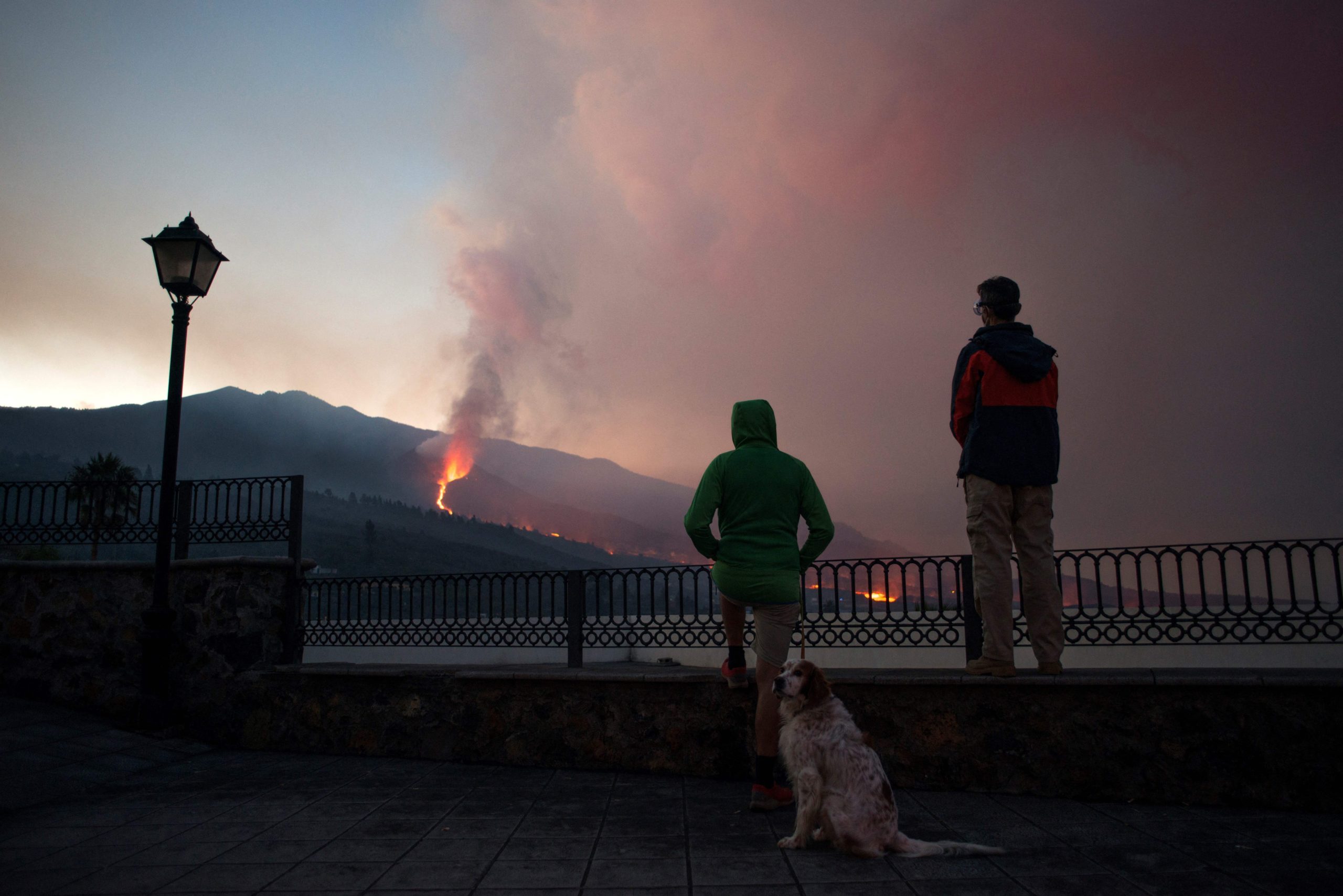
The lava-ocean reaction can also be physically dangerous. When lava — which is more than 1,000 degrees Celsius — meets relatively cooler seawater, it can create an explosion of debris. Known as lava bombs, these projectiles can cause serious injuries.
During the 2018 Kīlauea eruption, nearly two dozen people were injured when a lava bomb hit a tour boat. Authorities have expressed concern that the La Palma eruption could lead to a similarly dangerous situation.
Lava Is Forming a New Coastline
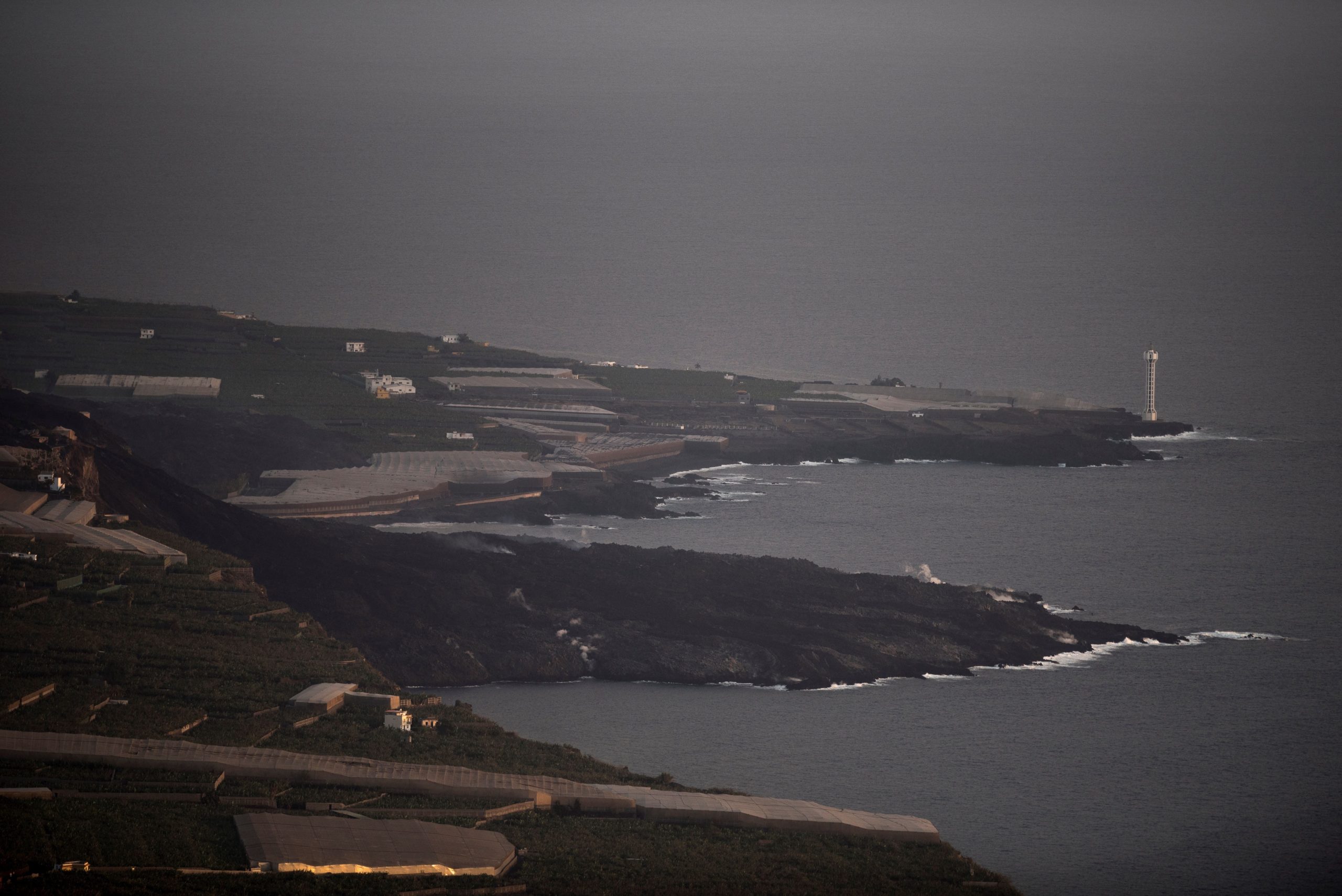
The lava is also reshaping La Palma’s coastline as it meets the water and cools off. Experts estimate that the lava has already created 84 acres of new land. And there may still be more to come as the eruption shows no signs of stopping.
“We cannot say that we expect the eruption that began 21 days ago to end anytime soon,’’ said Julio Perez, the regional minister for security on the Canary Islands, told reporters over the weekend.
